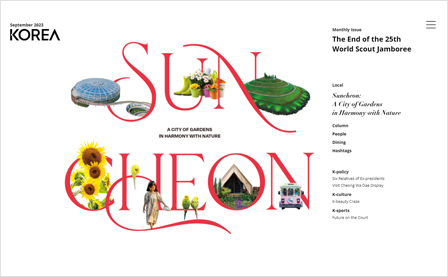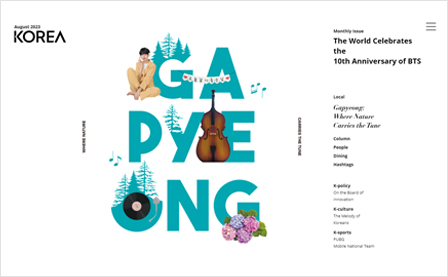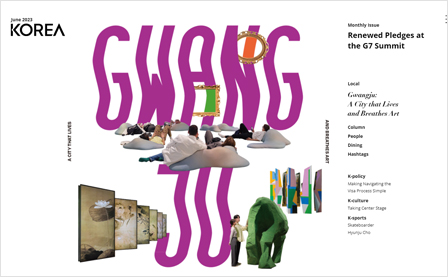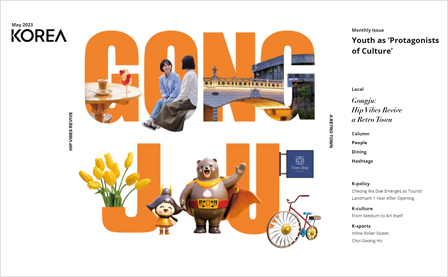October 2023

Local
Written by
Sung Ji Yeon
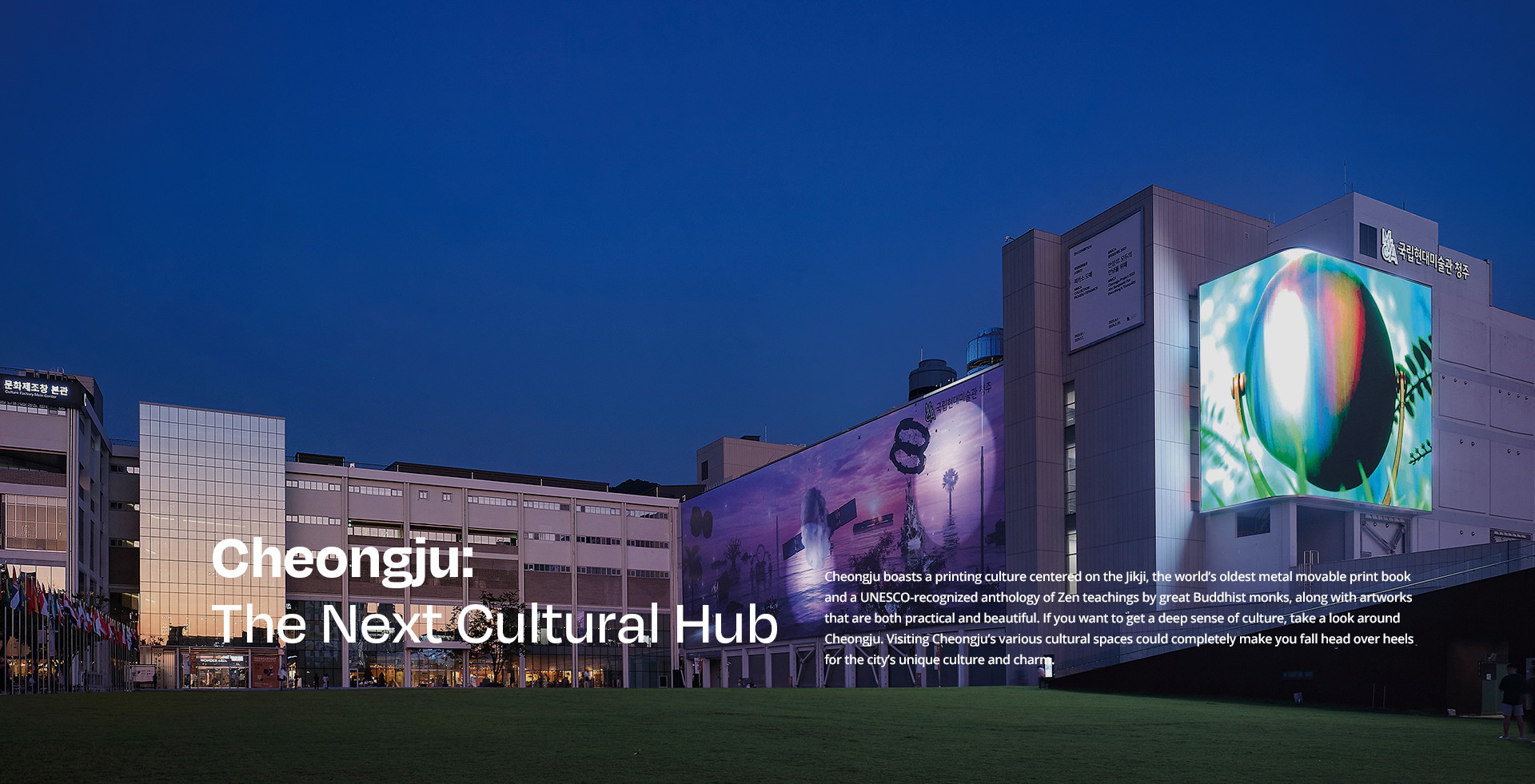

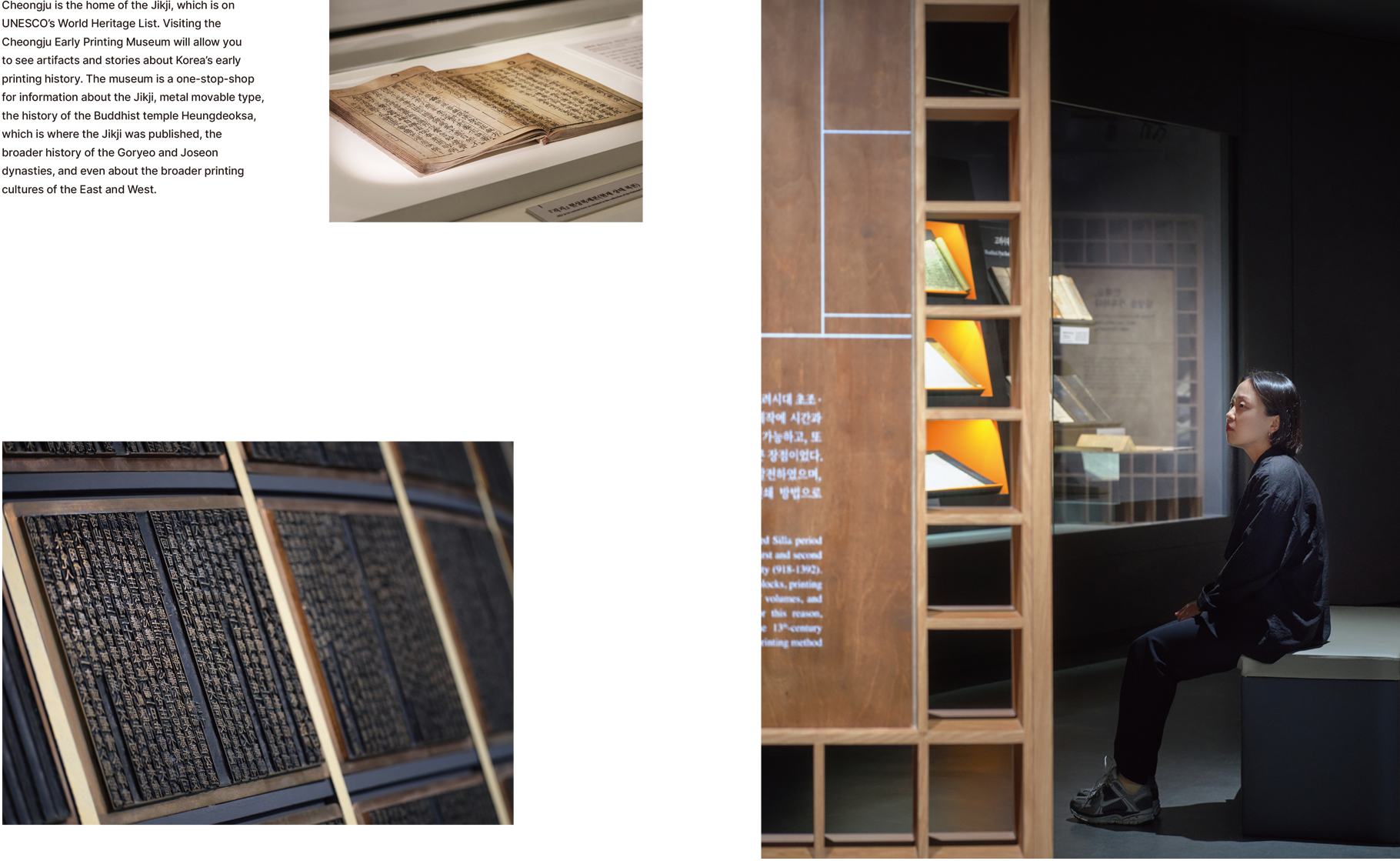
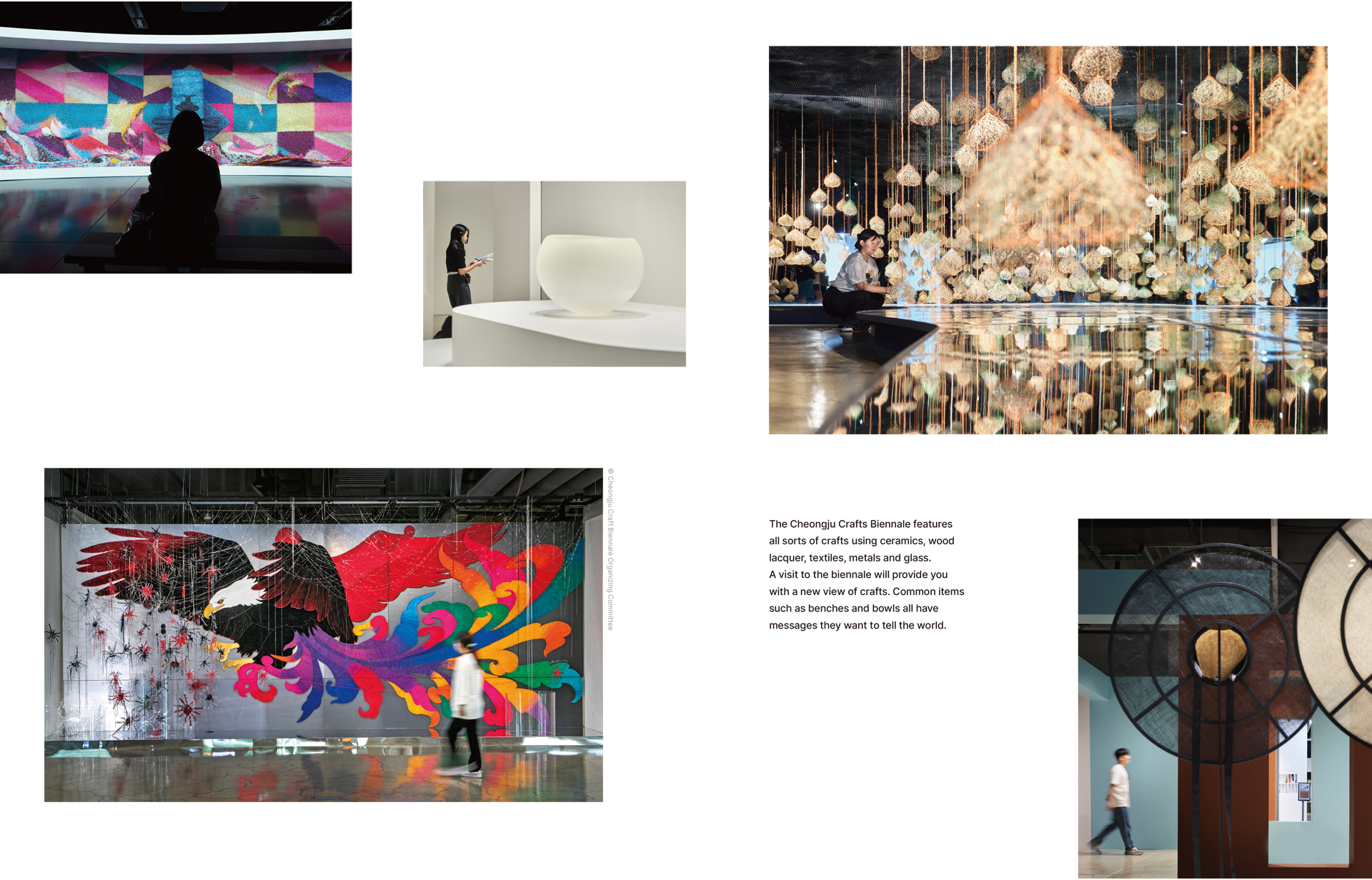

Local
Column
Culture Shines in Cheongju
Culture is the basis of human spirit. Cheongju understands the importance of culture and the city intends to use its cultural resources to become a “cultural city for the next generation.” Cheongju’s efforts in this regard can be witnessed by visiting the city’s most prominent tourist sites. The city is holding events that allow visitors to have a broad yet deep hands-on experience with its local culture.

Experience the Jikji
The Cheongju Early Printing Museum shows the history of the city’s records and printing culture. The Jikji, which is a collection of quotations of a high priest created by a Buddhist monk, is the world’s best example of a metal movable type book. The museum allows visitors to experience everything related to the Jikji, from viewing the restored first and second volumes of the Jikji in the form of large books being exhibited and videos containing the history of the Jikji to the artifacts discovered at the Heungdeoksa and hands-on exhibits showing how the Jikji was made.
The Cheongju Early Printing Museum is a history museum, yet it is arranged in a very interesting way. Visitors can come to know the Jikji in new ways through an augmented reality game using metal typesets, an exhibit controlled by the visitor that shows historical figures through metal type, and media artwork in colorful type that can be seen in all four directions. The Metal Movable Type Making Education Center, which is affiliated with the Cheongju Early Printing Museum, allows visitors to participate in programs where they can produce their own metal type and even print what they have created. There are few opportunities available to actually touch type and use ink to print them out, which makes these programs great opportunities to do so. The feeling from touching the type will remain in your memory for a long time.
Meet the Crafts
The Cheongju Crafts Biennale was launched in 1999 and this year marks its 13th anniversary as a globally recognized culture and arts event featuring a diverse range of crafts made out of ceramics, wood lacquer, textiles, metals and glass. The theme of this year’s biennale is “The Geography of Objets: Living in the Net of Biophilia.” The biennale shows participants how crafts should change in the future by reflecting on whether crafts have developed solely through human beings.
The themes of the biennale’s exhibitions include: “Biophilia, Beyond Humanism”; “Meme & Cultural Contexts”; “Hybrid & New Craftsmanship”; “Upcycling & Ecological Correctness”; and, “Net of Biophilia & The Future.” Eye-catching crafts are featured after each session ends. Visitors can newly experience common things such as large gardens replete with ceramic vines and flowers and benches made of Cheongju’s old-growth trees.
Apart from the main exhibitions, you would be amiss not to check out the exhibition with the winning crafts from the 2023 Cheongju International Craft Competition. The exhibition puts on display the creativity of craftspeople, including a piece that features more than 3,000 dandelions formed into the shape of a jar, and a stunning piece that compresses a vivid landscape into a transparent cube.
Other Cultural Attractions
If you feel the need to see more than just the biennale, you should take a look at other cultural sites in the city while you’re there. Above all, the Culture Factory where the Biennale is held features a wide range of cultural spaces. The first floor is always full of people. The restaurant and cafe allow visitors to relieve their thirst and hunger at any time, while a flea market invites visitors to drop in and light-heartedly peruse agricultural products from the Chungcheong-do region and daily sundries created by local people.
The Culture Factory also features a cultural space devoted to video editing and production. The Chungbuk Viewers Media Center allows anyone to use the facility’s studio, broadcasting experiential exhibition and video editing room, and even rent out equipment such as drones and camcorders. On the same floor, the Cheongju Open Library has around 20,000 books, where you can comfortably sit on a sofa or at a desk under cozy lighting and enjoy reading books.
Right in front of the Culture Factory is the National Museum of Modern and Contemporary Art Cheongju. It is famous for opening up what is normally a closed-off art warehouse to ordinary visitors. However, the museum’s exterior is also worth checking out. The media façade installed on one part of the exterior features a digital exhibition. If you want to enjoy the exhibition better, you should visit the museum when it’s dark. The video shown on the screen can then be seen more clearly, and it is easier to become immersed in the fourdimensional scenes, which materialize along the curved screen. It will make you feel like you’re watching real-looking 3D art inside a massive movie theater.
The Cheongju Museum of Art is also a well-known cultural space in the city. Presently, the museum is holding an exhibition called “Architecture Becomes Art,” which features artwork that shows how architecture and art influence one another. While walking around the exhibition, you can see the lit-up sculptures covering the exhibition’s ceiling and a space with profound and mysterious light that appears to look like stained glass.

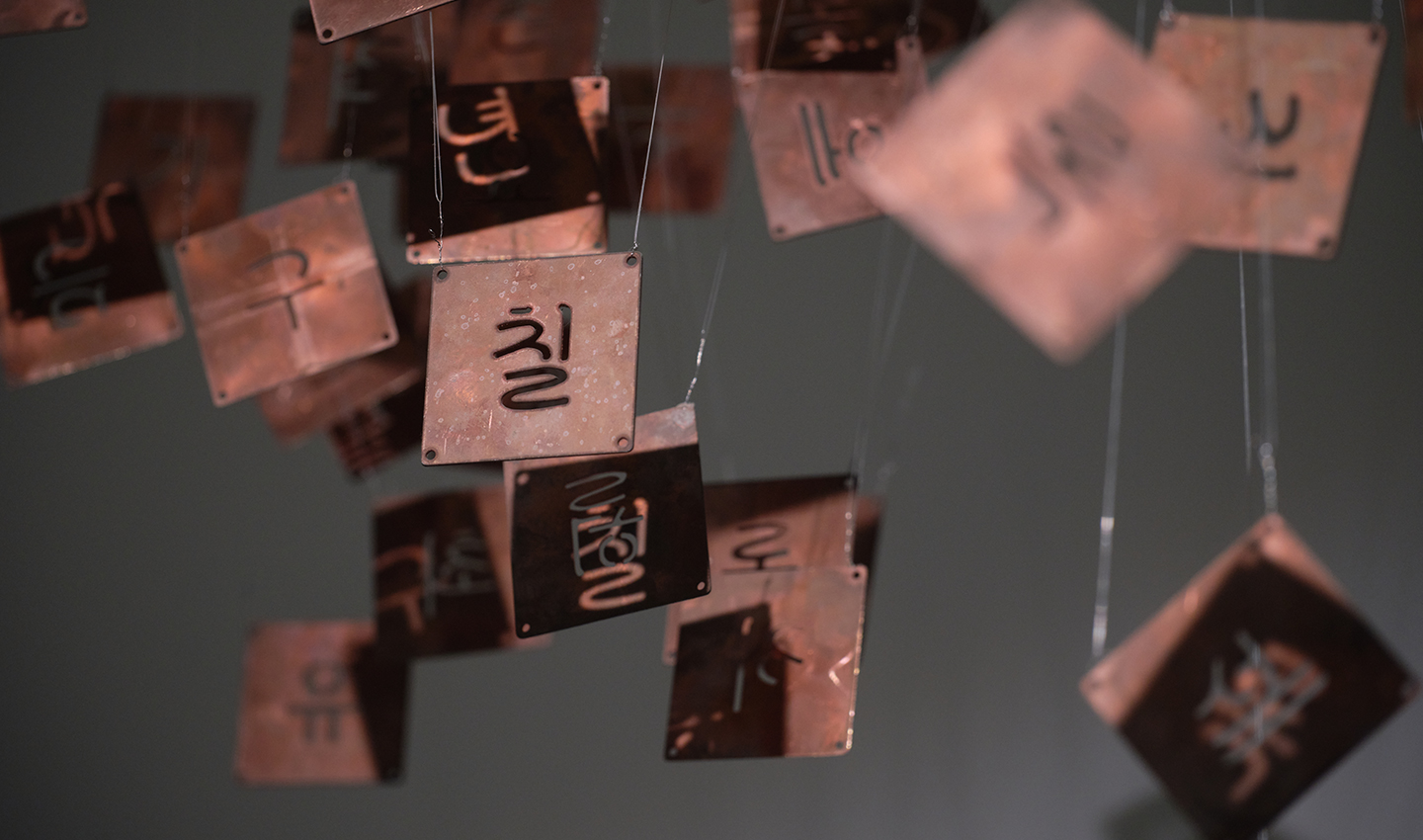
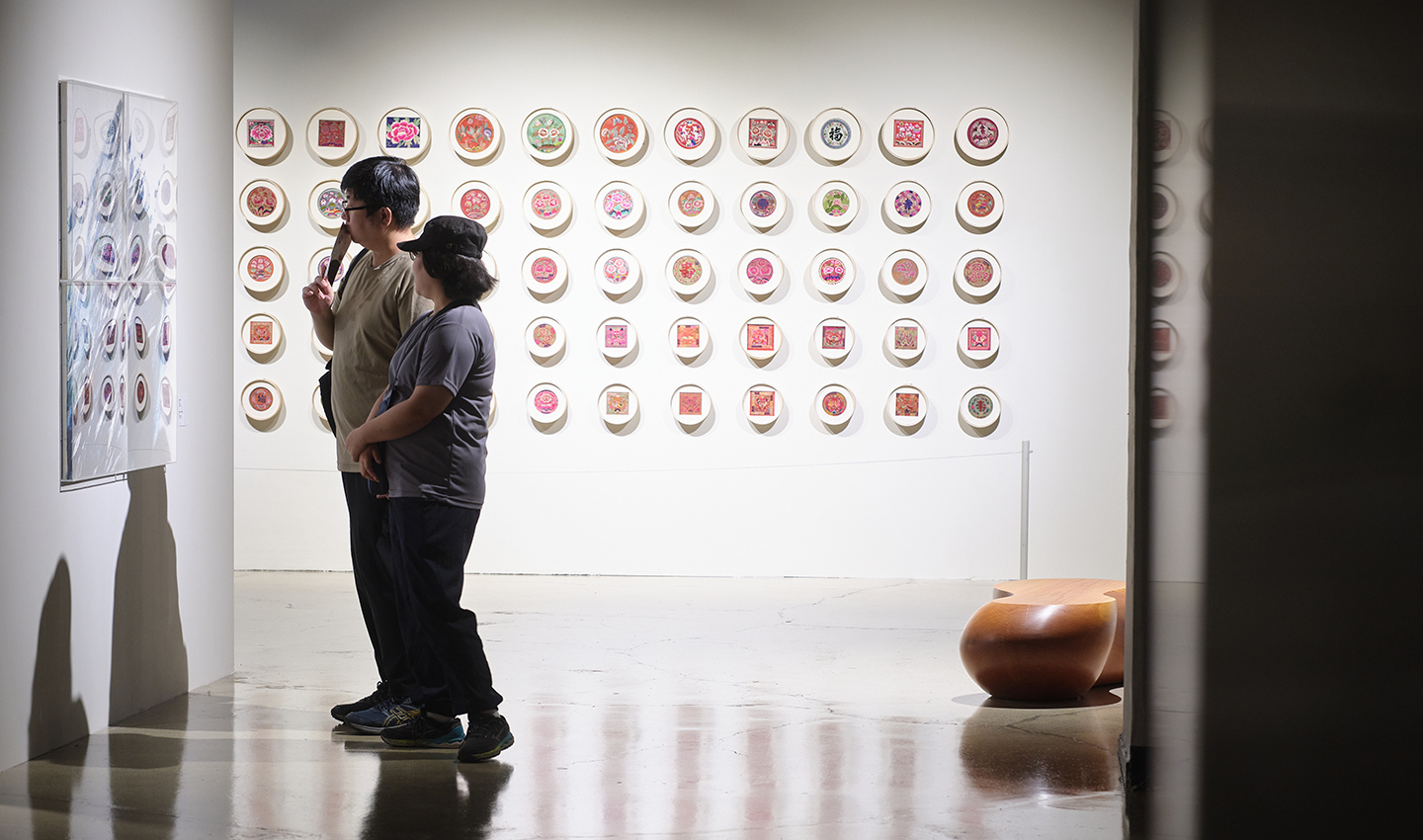
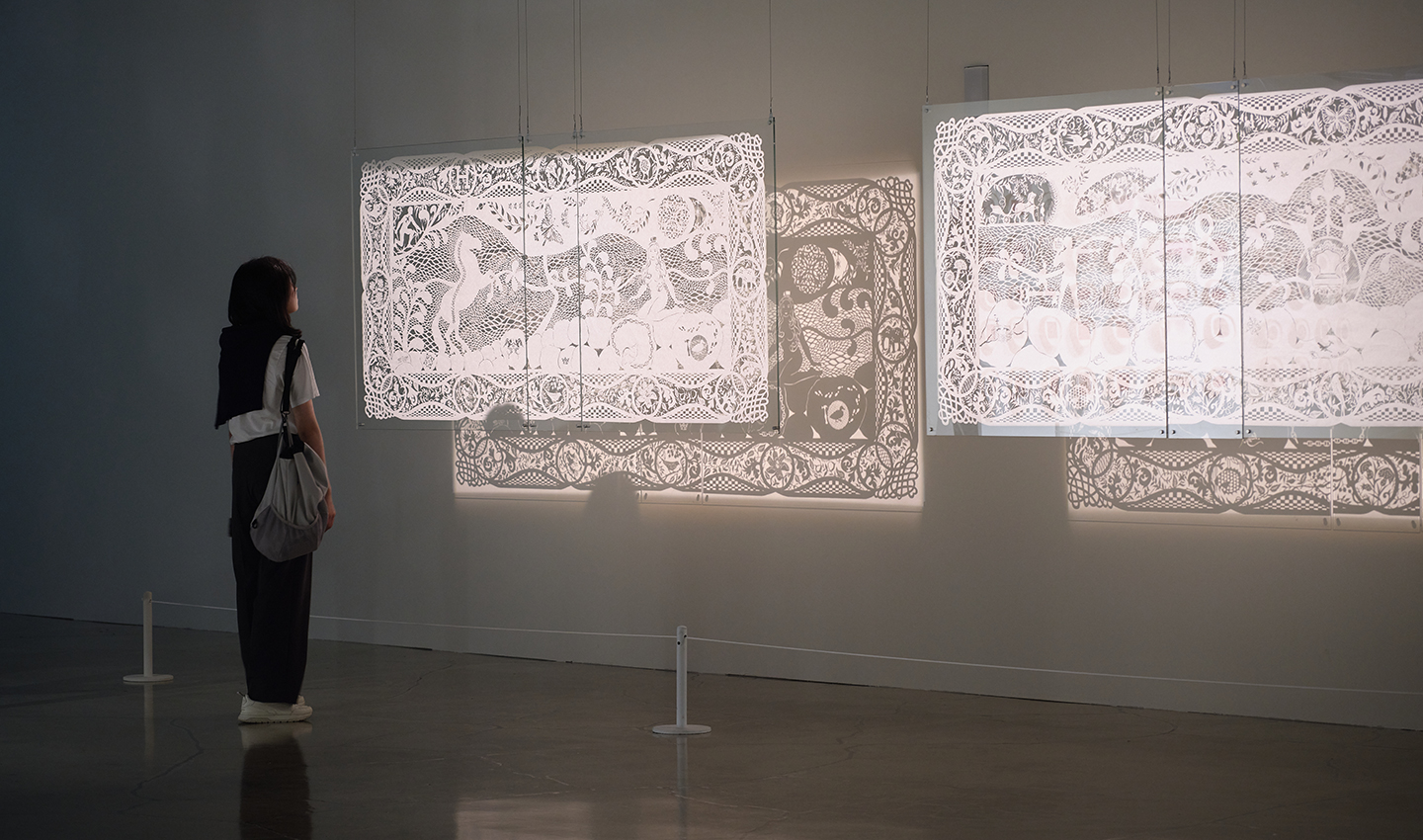
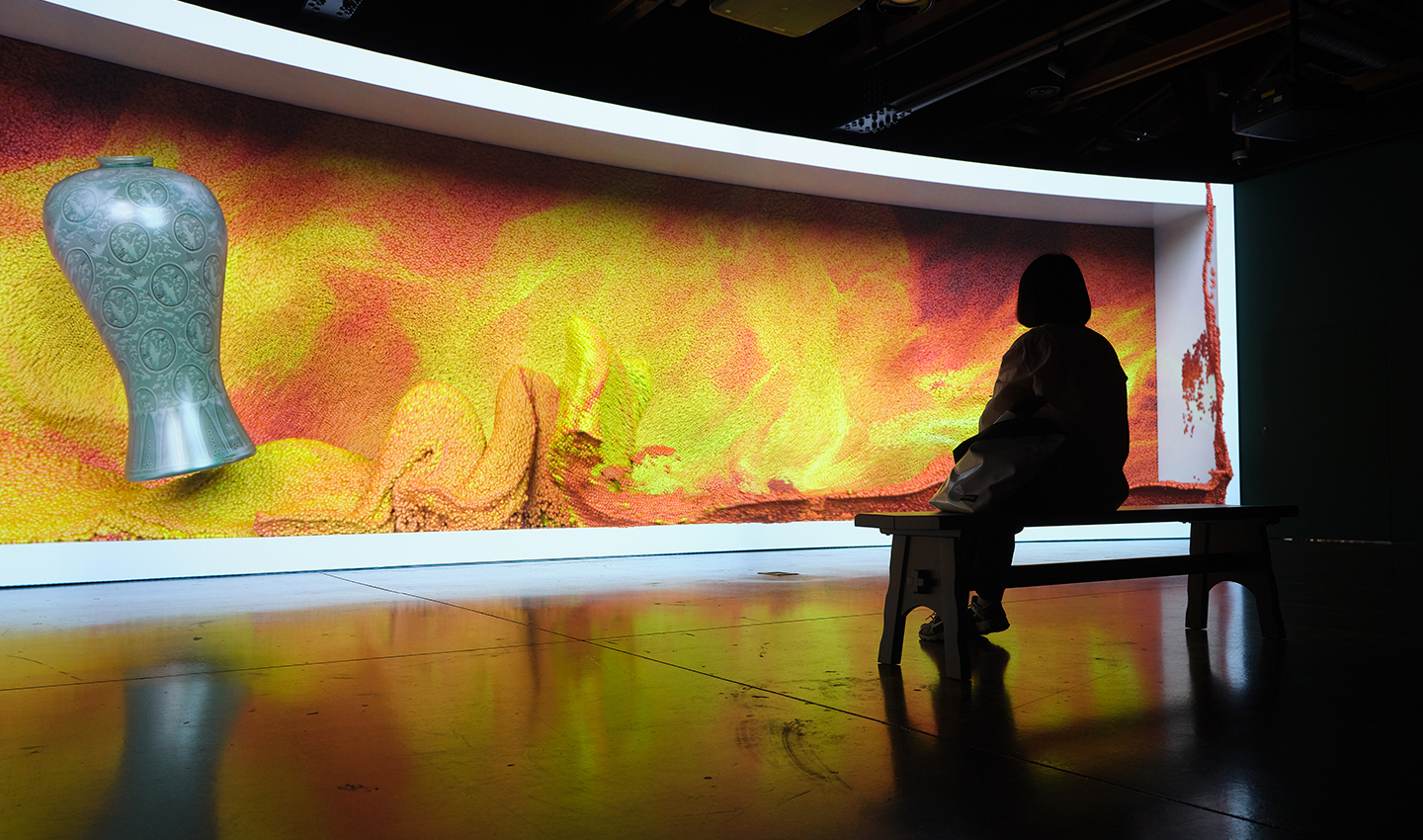

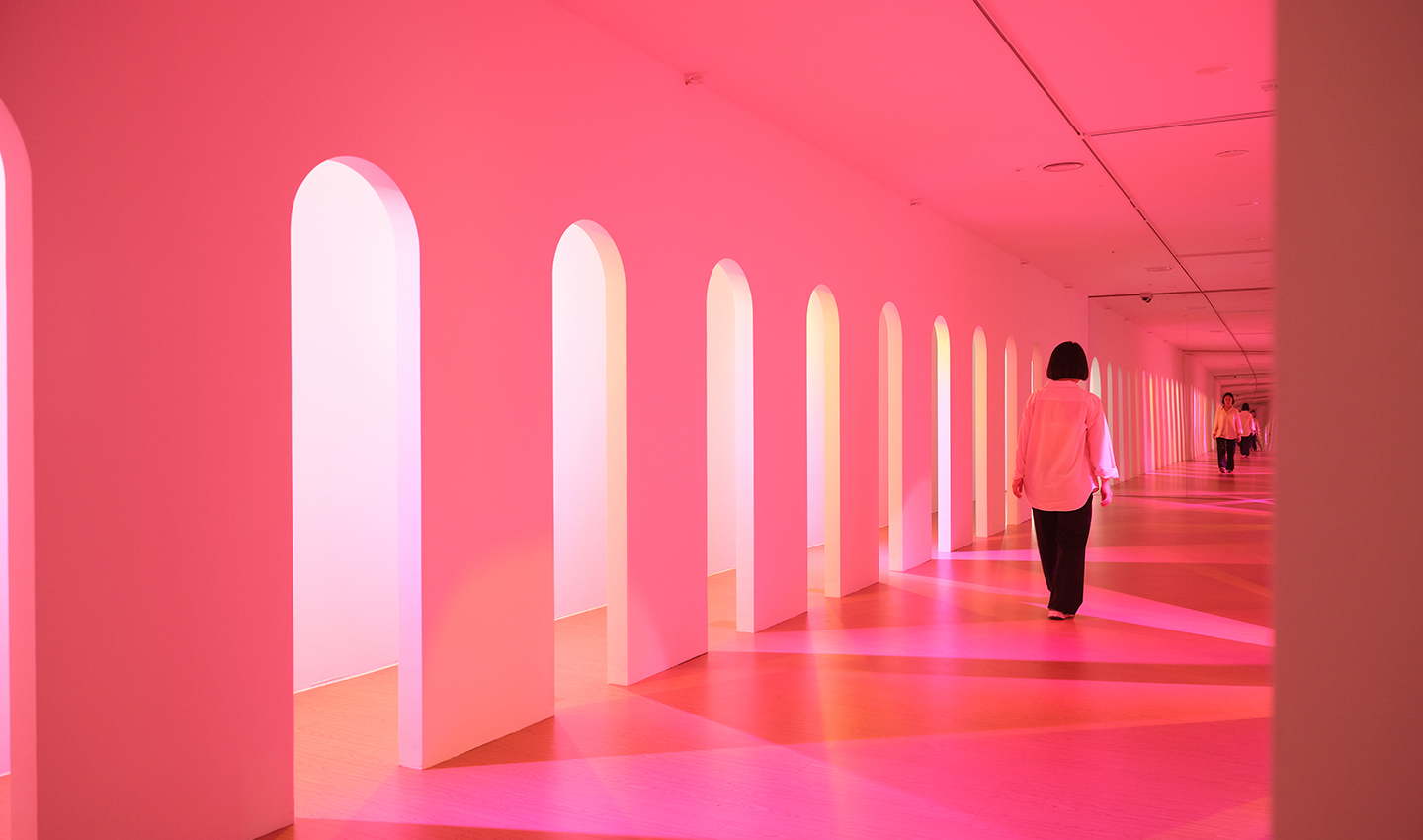
 View of all
View of all